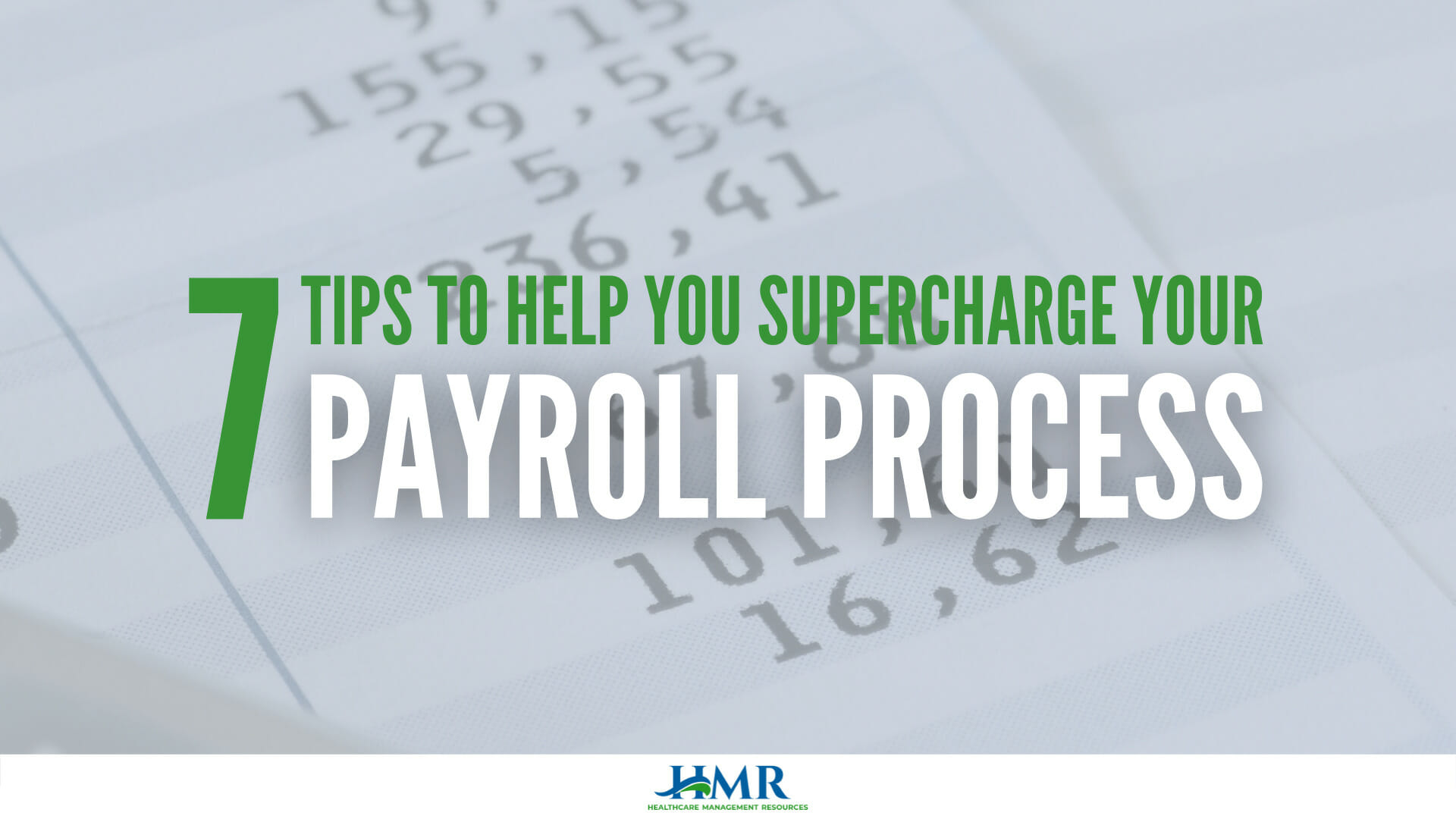7 Tips To Help Your Payroll Process

Do you feel managing payroll process is one of the most tedious tasks of running an independent practice? Don’t worry! You’re not alone. Employee payroll statistics show that 40% of business owners find payroll and bookkeeping processes the most challenging business task.
When you consider regulations, tax, and other deductions, setting up payment processes, etc., all of these processes make the manual payroll system overwhelming. We recommend using payroll software and employing a bookkeeper to get the job done.
This article discloses seven tips you can implement to streamline your payroll process and boost operational efficiency.
How can you streamline your payroll process?
Choose a payroll system
A payroll system is any software that helps maintain your records, automate payments and invoices, create comprehensive reports, and more. Different kinds of payroll software are available, so evaluate what fits your needs the best.
At HMR, we use iComp; a payroll system specifically made for small and medium-sized businesses.
Implement a payroll policy
A payroll policy ensures adherence to legal compliances and timely payouts to employees. It consolidates all the payments in one place and automates them. To implement a payroll policy, you need to understand the kind of employees you have, their location, type of tax deductions, etc.
You can set a weekly day (Friday) or monthly date (5th of every month) to make payouts. The absence of constant follow-ups regarding payouts keeps employees happy.
Collect employee information
You might have all your employee records in place. However, for tax deductions and payroll processing, you’ll need a few additional documents like:
- The W-4 form to withhold the amount for federal and state taxes
- The W-2 form indicates money paid and withheld
- Documents for medical insurance or other benefits
Collecting these documents beforehand enables smooth processing. Request all your employees and contractors to submit any relevant documents within the dedicated period.
Set up a debit system
Next, you need to set up a money transfer system. You can use a direct deposit system or providers like Quickbooks, Stripe, etc., to automate payouts for employees, vendors, and contractors.
Note: Connect the correct bank account to the software and ensure it has enough cash flow.
Establish a time tracking system
Time tracking helps you know the number of hours worked by the employee/contractor. You can implement a manual time tracking system by recording in books or automate it by using software that records timestamps using magnetic ID cards.
Time tracking streamlines calculating deductions and overtime wages. You can fix one day for employees to collect time sheets and rectify any potential issues before the payday.
Verify & submit payroll
Once all the information is consolidated in your software, you can begin verifying payroll for the month. Payroll mistakes are costly. Therefore, you must clear wages depending on the commitment within the month. After you’ve verified everything, approve the payout.
Update your bookkeeping
Last but not least, verify and update your bookkeeping regularly (once a month or quarter). Also, get the books audited by accredited professionals.
Regular verification will help you stay compliant with income and tax reporting. Updating outdated processes will streamline your payroll system in the long run.
Streamlining The Payroll System Smoothens The Financial Aspects of a Business…
But, it also boosts employee engagement and morale. An effective payroll system ensures legal and financial compliance.
Even though they’re simple, the seven tips mentioned in the article are effective ways to create, streamline, and maintain an efficient payroll system. Implement them and see your business operations flow smoothly.
Are you overwhelmed with the payroll system and looking to outsource your bookkeeping needs to professionals? Reach out to us today and let us help you!
